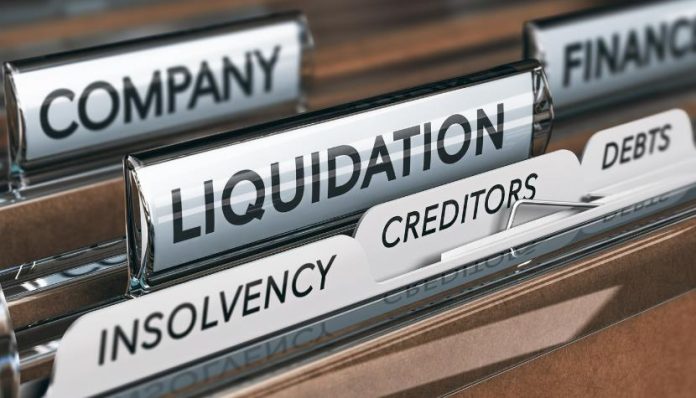Table of Contents
liquidation processLawyers for liquidation are often viewed as a last resort, but they can also be essential guides during one of the most challenging stages of a business’s lifecycle.
Whether your company is struggling due to debt, market shifts, or unexpected setbacks, understanding the process of liquidation can empower you to make informed, strategic decisions.
With help from experienced liquidation lawyers, entrepreneurs can move through closure with clarity and confidence. In this guide, we’ll break down what business liquidation involves, when it might be necessary, and the steps to take if your business is heading in that direction.
What Is Business Liquidation?
Business liquidation is the process of bringing a company to an end. Its assets are sold off (liquidated) to pay off creditors, and any remaining funds are distributed among shareholders. Once liquidation is complete, the company ceases to exist.
There are three main types of liquidation in the UK. Creditors’ Voluntary Liquidation (CVL) occurs when directors voluntarily close an insolvent company. Compulsory Liquidation, on the other hand, is initiated by a court order, usually after a creditor files a petition.
Finally, Members’ Voluntary Liquidation (MVL) is used to close solvent companies in a tax-efficient way. Each type has different implications for directors and shareholders, so seeking legal advice early is essential.
What Should You Know When Navigating Business Liquidation?
Signs It Might Be Time to Liquidate
If your business is struggling to pay its bills, defaulting on loans, or constantly under pressure from creditors, it may be insolvent. This means your liabilities outweigh your assets, and you’re unable to meet financial obligations as they fall due.
Repeated HMRC demands, missed tax payments, unpaid wages, and the inability to secure funding are further signs that liquidation might be necessary.
A decline in market demand without a viable recovery plan can also signal that closure is the most sensible option. The Insolvency Service provides resources to help assess whether liquidation is necessary.
The Liquidation Process Step-by-Step
If liquidation is the most appropriate route, the first step is to appoint a licensed Insolvency Practitioner (IP). This professional manages the entire liquidation process, from assessing assets to overseeing final closure.
Once appointed, the IP will begin by valuing and selling company assets such as equipment, inventory, or property. The proceeds from these sales are then used to pay off creditors, following a legal order of priority.
After all distributions are made and records finalised, Companies House will strike off the company, formally ending its existence. Throughout the process, the IP ensures everything is carried out transparently and within the bounds of the law.
Director Responsibilities During Liquidation
As a director, your legal duties change once the company becomes insolvent. You must prioritise the interests of creditors over shareholders or your own.
Continuing to trade while insolvent, selling off assets under value, or favouring one creditor over another can lead to serious consequences, including accusations of wrongful trading or personal liability.
To protect yourself, it’s important to stop trading immediately once insolvency is confirmed, maintain thorough records, and seek legal guidance. The Companies House guidance on insolvency outlines director responsibilities clearly and is a helpful resource.
Liquidation Doesn’t Mean Failure
Closing a business can feel deeply personal, but it isn’t necessarily a sign of failure. Sometimes liquidation is the most responsible and strategic decision available. It allows business owners to stop the accumulation of debt, preserve their integrity, and potentially start fresh.
Many entrepreneurs have experienced liquidation and returned stronger with more experience and insight. Treating the process with professionalism and honesty is key to moving forward. Seek the right support early, and keep in mind that closure can be the beginning of a new chapter.
Alternative Options to Consider
Before deciding on liquidation, it’s worth exploring other business rescue options. A Company Voluntary Arrangement (CVA) allows a business to negotiate new repayment terms with creditors, potentially preserving the business. Administration can provide legal protection while a company reorganises or prepares for sale.
Time to Pay arrangements with HMRC offer businesses additional flexibility in settling tax liabilities. Consulting with a solicitor or insolvency expert as early as possible improves your chances of finding a workable alternative.
The British Business Bank offers advice and funding tools that support SMEs facing financial distress.
Communicating With Stakeholders
Transparency is essential during liquidation. Employees, customers, investors, and suppliers must be informed professionally and promptly. Staff should be given the appropriate notice and may be entitled to redundancy pay from the government.
Customers with outstanding orders or credit balances should be contacted quickly to manage expectations and protect your brand’s reputation.
Suppliers need clarity on future transactions and payment likelihood. Clear and respectful communication helps maintain relationships and avoids unnecessary confusion or legal fallout.
Planning for a New Start
Once liquidation is complete, many directors go on to establish new businesses. It’s important to reflect on what went wrong, whether it was financial mismanagement, market misjudgment, or external pressures, and apply those lessons moving forward.
Consider strengthening your next venture with better financial planning, risk management, and a more robust support network. Seeking out business mentors, financial training, and legal advice will help create a more resilient foundation for your next project.
The Federation of Small Businesses is an excellent source of support, offering mentoring, funding advice, and resources for entrepreneurs seeking a fresh start.
Final Thoughts
Liquidation is a serious step, but it doesn’t have to be a destructive one. When handled properly, it can protect creditors, prevent further losses, and provide business owners with a clear path to begin again.
The earlier you seek legal advice, the more control and options you’ll retain. Trusted lawyers will help you comply with your legal obligations while exploring the most constructive way forward for you, your staff, and your business.
This article is for general information only and does not constitute legal advice. If your business is facing insolvency or liquidation, consult a qualified solicitor or insolvency practitioner as soon as possible.


